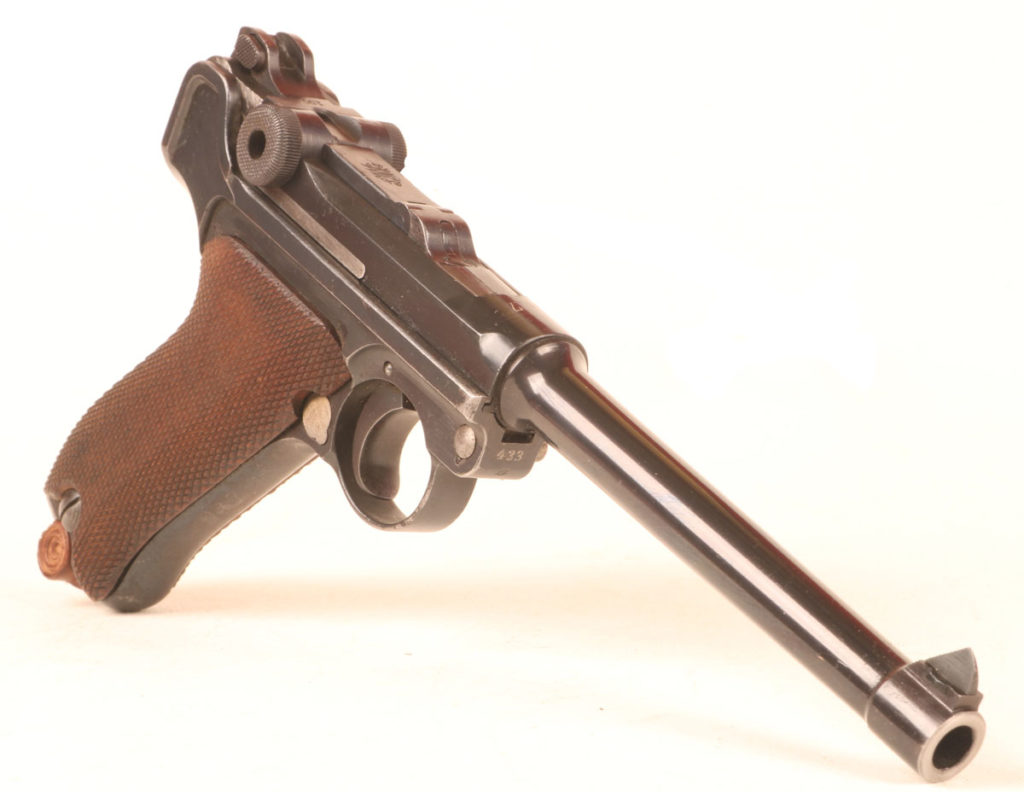 Korvettenkapitan Waldemar Kophamel was filthy, exhausted, and hungry. He had been confined within a compact steel tube along with fifty-five of his mates for nearly three weeks now. This morning, however, he was sucking in sweet clean ocean air by the drought. Unterseeboot-151 was his home, his family, and his tribe. This particular morning it was also a predator.
Korvettenkapitan Waldemar Kophamel was filthy, exhausted, and hungry. He had been confined within a compact steel tube along with fifty-five of his mates for nearly three weeks now. This morning, however, he was sucking in sweet clean ocean air by the drought. Unterseeboot-151 was his home, his family, and his tribe. This particular morning it was also a predator.
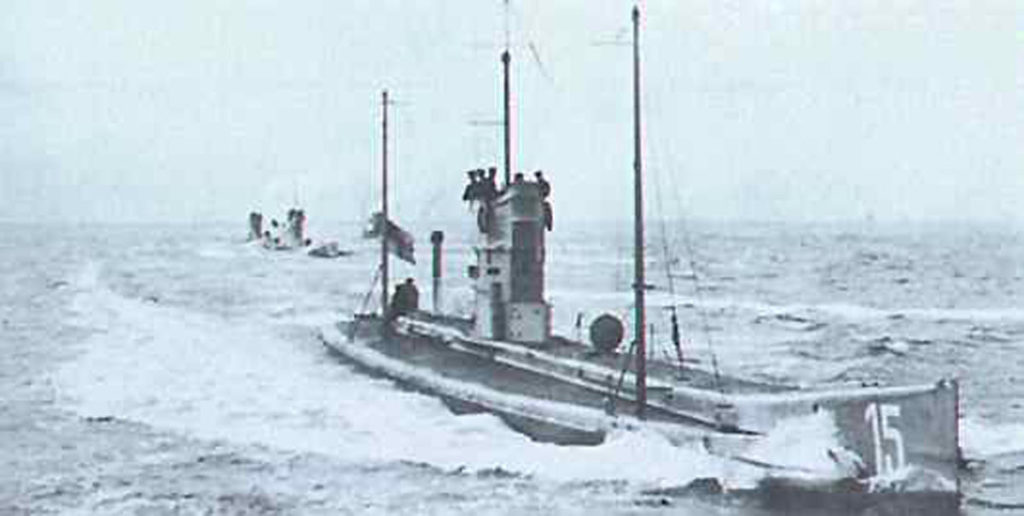
World War 1 saw the advent of naval warfare in the Industrial Age. The Germans pioneered the use of the Unterseeboot or U-Boat during these long years of unfettered war.
Slinking along the dark North Sea Kophamel and his crew had kept the fat British steamer within view for hours. As dawn broke he opened his diesels and closed the range before the hapless ship had time to evade. Now his forward deck gun, a high-velocity 150mm beast, was manned, armed, and ready. Pulling his boat up alongside the British ship he slid his sidearm out of its holster and attached the wooden shoulder stock. Snapping the toggle action closed over a live round he rested the gun’s barrel on the conning tower coaming and steadied his nerves.

Though primitive by today’s standards, the WW1-era German U-Boats remained remarkably complex machines.
The British crew only now realized the peril that had arisen from the darkness. His opposite number, a British officer of about his same age and build, peered back at him through binoculars from his own bridge. Nothing about the enemy vessel seemed amiss.
Kophamel glanced to his left to see Seaman Haus pulled in tight behind his MG08 Spandau Maxim gun. Seaman Peters stood alongside, his fingers quivering on the cloth belt shiny with cartridges. He would try to allow the British to abandon their vessel before his deck guns sent her to the bottom. However, if he suspected anything the English would earn themselves a fight.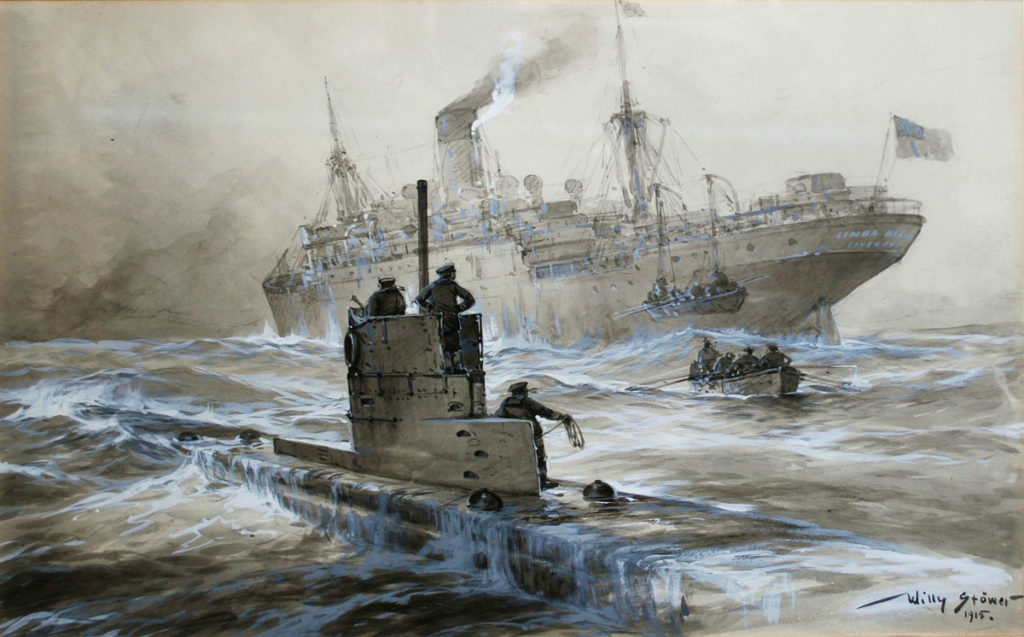
Kophamel sensed the danger before he saw it. The English Captain turned and spoke to a sailor standing alongside before raising his binoculars to his eyes again. The crewmen scurrying around the deck suddenly disappeared, and he saw the fat black muzzle of a Lewis machine gun pop up over the railing around the merchant vessel’s bridge. At the same moment, men with rifles seemed to sprout along the length of the ship. Kophamel screamed, “Feuer!”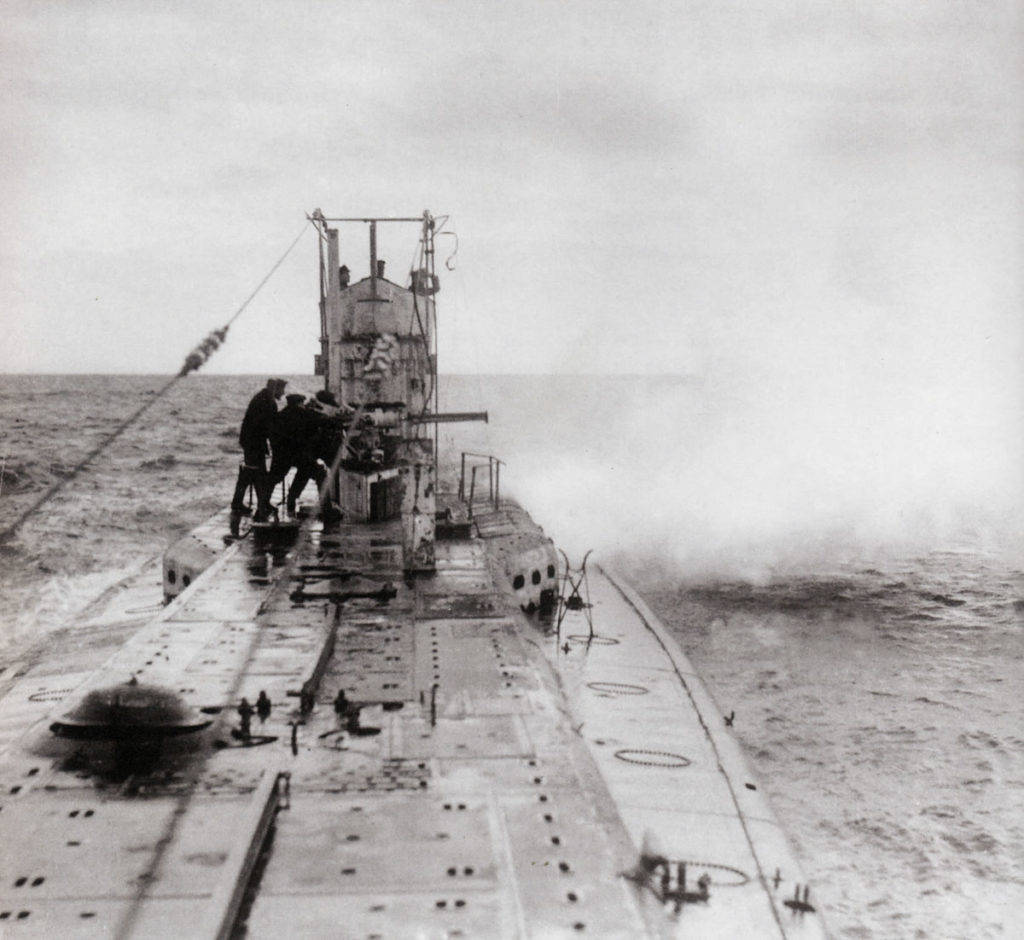
The noise of the Maxim gun so close to his head was deafening. Kophamel concentrated on his sights and snapped off four quick 9mm rounds before the deck gun roared, punching a heavy 150mm high explosive shell into the English merchant vessel right at the waterline. The round detonated belowdecks with a dull crump, and inky black smoke shot out of the doomed ship’s funnels. English .303 rounds pinged off of his own vessel as Haus raked the merchant ship from bow to stern and back. He then concentrated his fire on the Lewis gun, silencing it just as Kophamel’s deck crew punched a second round into the ship’s entrails. His Luger locked open over an empty magazine as flames began to appear from the ship’s speaking tubes. Return fire slackened and died.
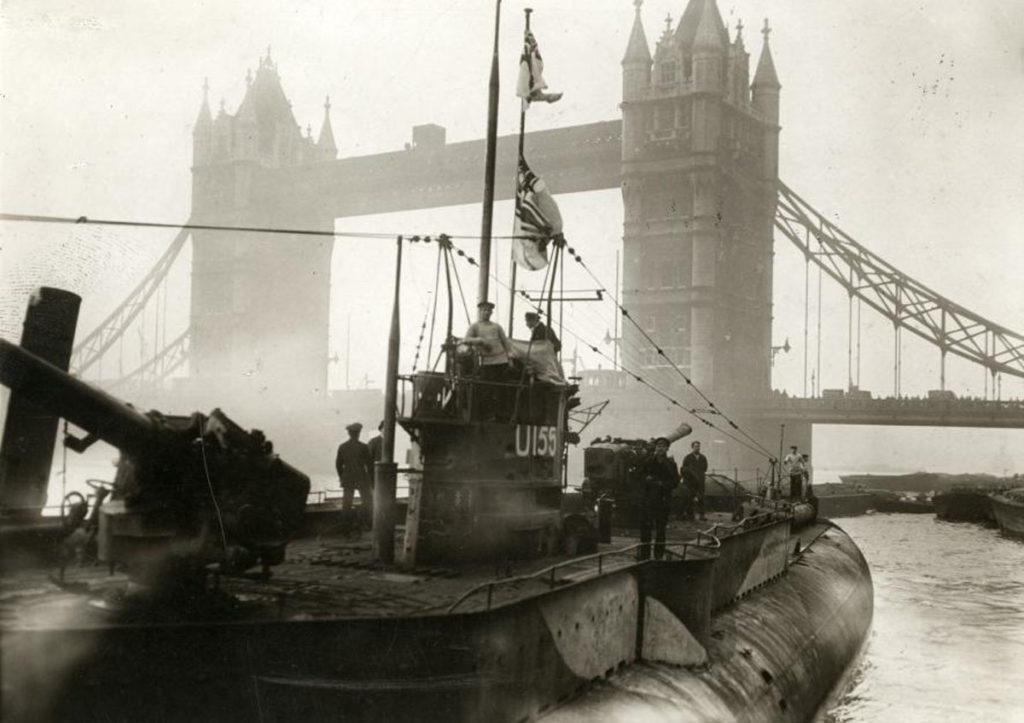
Surface engagements remained a critical part of the German U-Boat mission in World War 1. Later boats sported as many as four large-caliber deck guns.
Most of the ship’s crew would make it into the water, but the steamer was beginning to roll. There would not be nearly enough lifeboats. He stowed his long pistol back in its holster, took one more deep drag of fresh air, this time finding it tainted with the faint odor of oil, smoke, and death, and dropped back down into his boat before dogging the hatch above him. War is hell.
The P14 Navy Luger
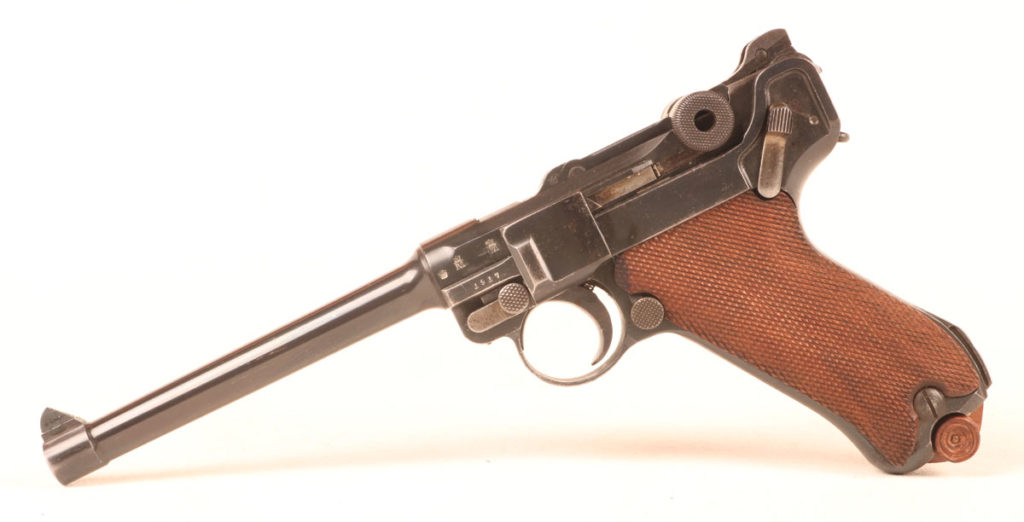
The P14 Navy Luger featured a 6-inch barrel and an attachment point for a shoulder stock. The rear sight was adjustable between 100 and 200 meters.
Georg Luger left an indelible mark on the firearms world that persists to this very day. His extraordinary eponymous handgun was not an altogether original design, however. His mentor, a German engineer named Hugo Borchardt, was actually the first to realize the human knee would translate into a serviceable firearm.
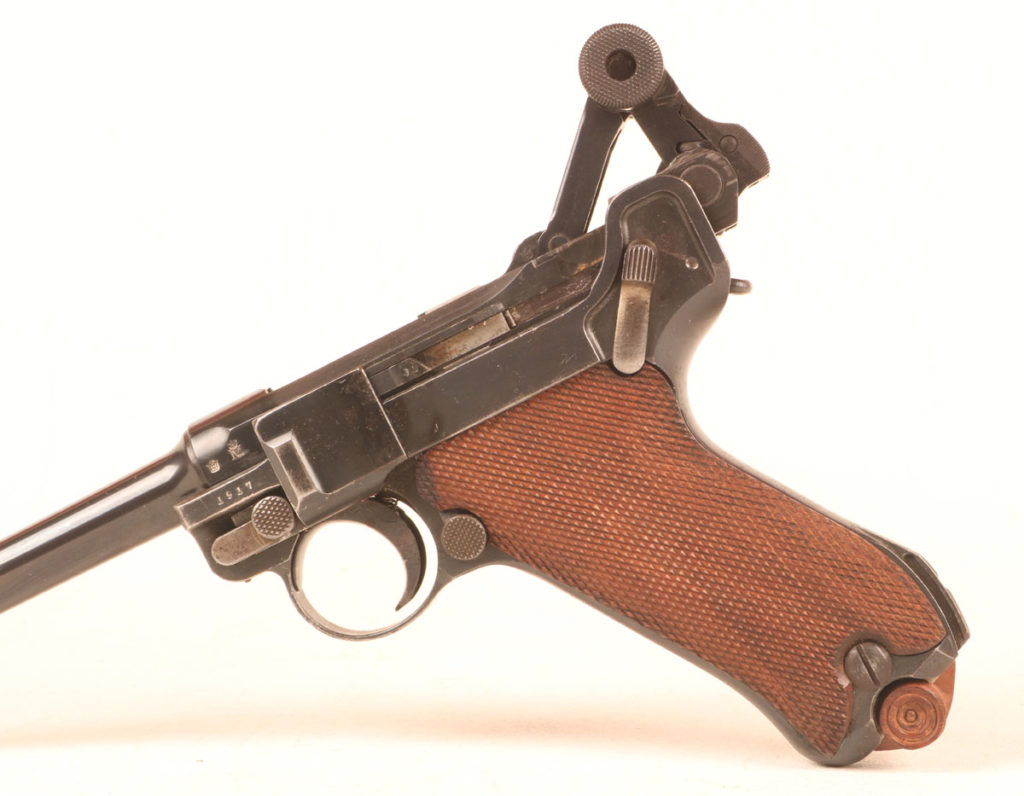
The recoil operated toggle action of the Luger pistols was inspired by the human knee joint and resembled a Maxim lock.
You can test out the theory behind all Luger pistols simply by standing up. When locked the human knee can support your body weight for extended periods without fatiguing. However, crack that knee joint forward just a hair, and the structure collapses. A Luger pistol operates much the same way.
The military designation of the familiar short-barreled Luger pistol is the P08 Parabellum. P08 refers to 1908, the year the Kaiser’s Army adopted the standard Infantry model. Parabellem is a cut from Si Vis Pacum, Para Bellum—let those who seek peace prepare for war. The German Navy adopted the gun several years earlier.
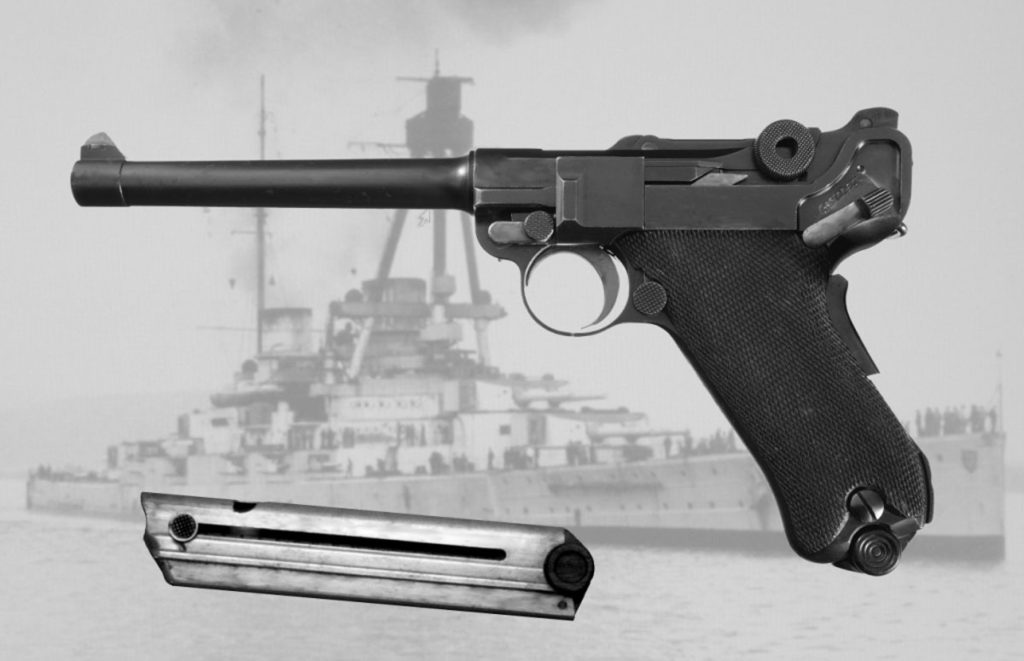
The original P04 Marinepistole Navy Luger had a prominent grip safety that was deleted in the later P14 version.
The Swiss were actually the first to adopt the Luger as a military arm chambered in 7.65x21mm in 1900. The P04 is the early Navy model and it included a grip safety. The later P14 did not. The toggle checkering differs between the two variants as well, if you can bring yourself to care. Both German Navy models fire the 9mm Parabellum cartridge.
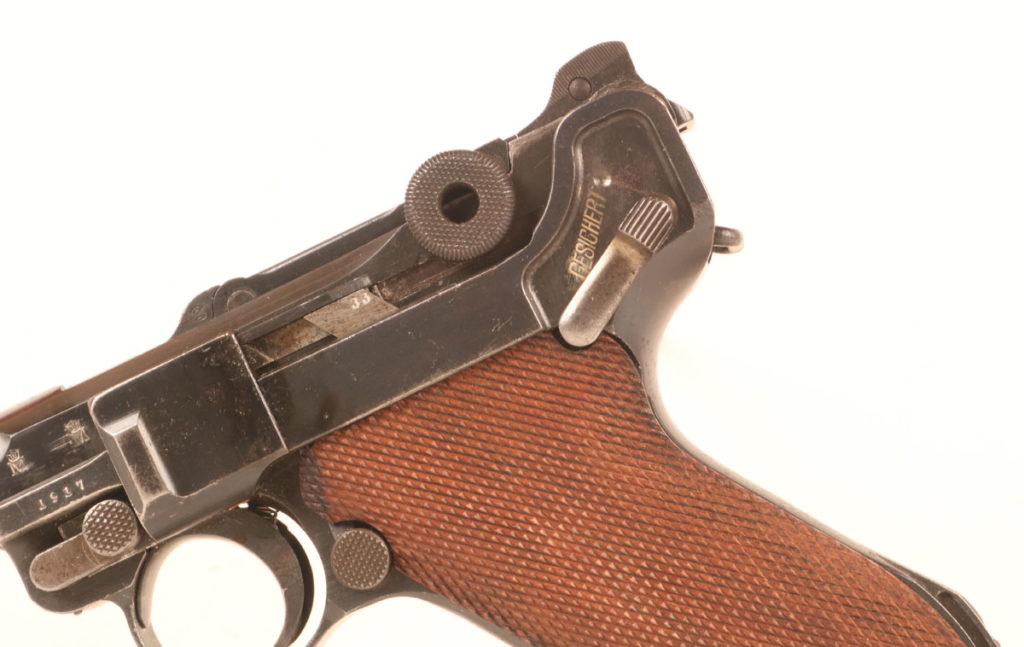
The safety on all Luger pistols is located on the left rear portion of the frame. Rear is safe, and forward is fire. Gesichert literally translates “Secured.”
The standard P08 Luger pistol sports a four-inch barrel and comically small fixed sights. The gun feeds from an 8-round single stack magazine and incorporates any number of prescient features. The magazine release is located underneath the right thumb, though the magazines tend to be a bit sticky. The magazine baseplates were originally made from wood and featured a handy little divot to render them more graspable.
Navy Lugers all sport a mounting lug on the butt for a wooden shoulder stock. Thusly equipped the long-barreled Luger makes a serviceable enough carbine. The rear sight on the Navy gun has two positions for 100 and 200-meter engagements. Press the knurled button in from the right and slide the assembly rearward to set it for the longer distance.
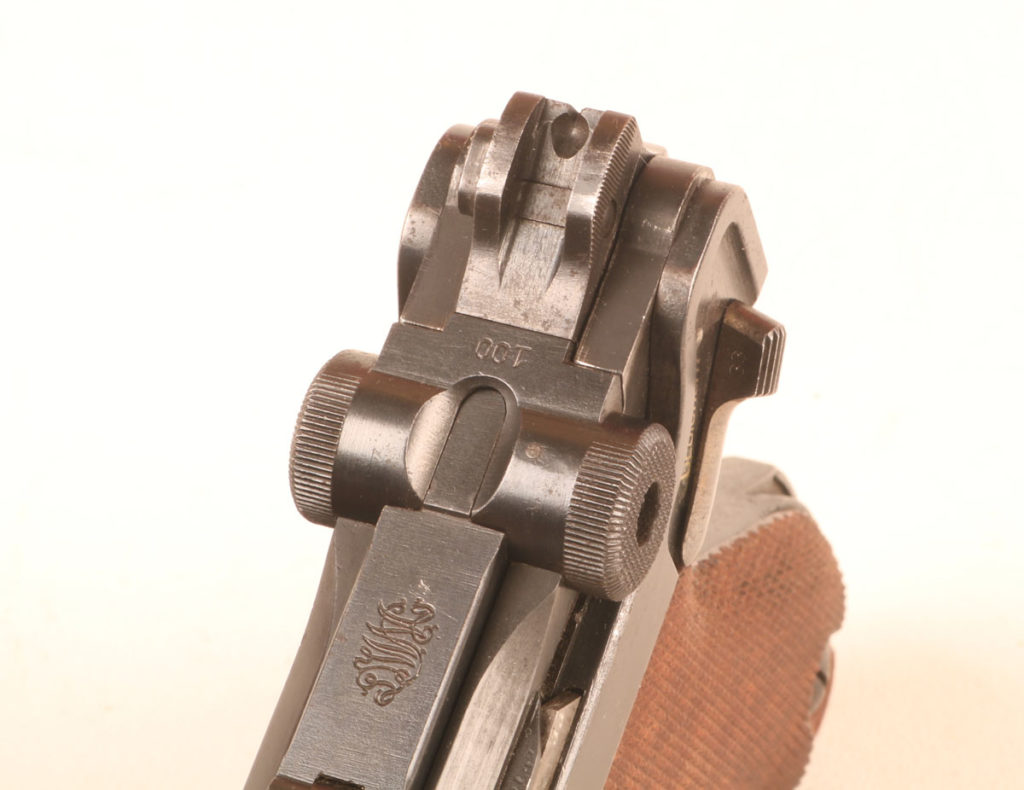
In addition to a longer six-inch barrel, the Navy Luger sports an adjustable two-position rear sight.
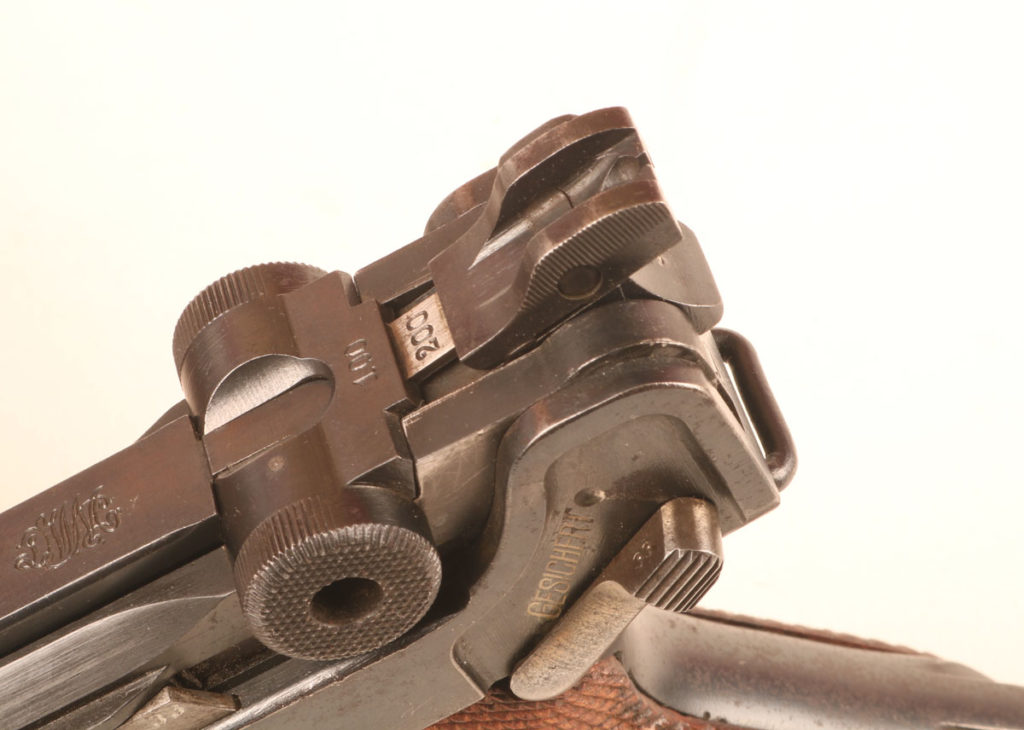
Practicality
Nowadays naval engagements take place well over the horizon. In 1916, however, the world was a very different place. Early German U-boats did employ serviceable torpedoes, but a great many engagements were prosecuted on the surface using deck guns and small arms. Naval personnel of this era needed a sidearm that could reach out far enough to harass enemy vessels while also serving to repel boarders at extremely close ranges.
Kophamel’s U151 sported four deck guns, two 88mm and another two 150mm. The boat packed nearly 2,500 rounds of ammunition for these four weapons. While the vessel could do twelve knots on the surface, its top speed submerged was less than half that. As such, the capacity to prosecute surface engagements remained a critical capability.
In a manner of speaking the Navy Luger was designed as a decapitation weapon. It was hoped that German U-boat captains might use these sidearms to pick off enemy commanders during close quarters ship-to-ship combat. That they were relatively ineffective in this role did not diminish their mechanical elegance.
Trigger Time
The BATFE exempts Luger pistols from the arcane barrel and stock restrictions that govern less collectible guns, so slapping a shoulder stock on your vintage Luger pistol attracts no federal ire. Thusly configured the gun is fairly comfortable and effective. As the sundry components will break down for easy portage the Navy Luger was a remarkably advanced close combat tool for its day.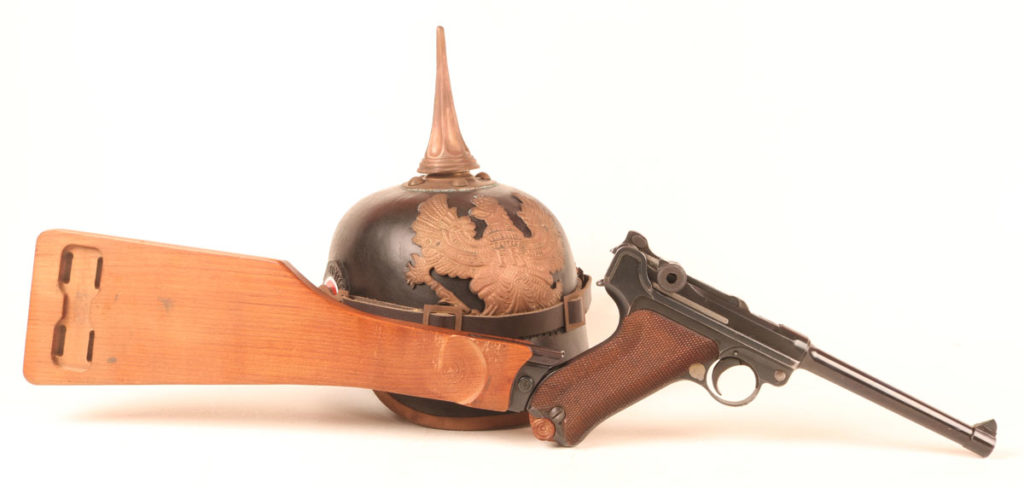
The trigger is mushier than it should be given its single action design, but the gun balances fairly well off the shoulder. The stock is skinny and austere yet remains nonetheless better than nothing. Shooting off a rest I could remain dangerous out to a football field and beyond. The single stack box magazine features a loading button to ease reloading chores and packs 8+1 of 9mm chaos onboard.

The Navy Luger accepted a simple wooden board stock. While not terrifically comfortable in action it yet remained better than nothing at modest ranges.
The stocked Navy Luger swings quickly and runs fast. Reloads are not as snappy as they could be given the sticky magazines. However, compared to the full-sized bolt-action Infantry rifles with which it competed the Navy Luger was a sports car in the close fight.
Luger Collecting
There is a veritable Internet religion surrounding the holy rites of Luger collecting. The sundry details of sights, serial numbers, condition, and origin can determine values that span the spectrum. Low end mismatched guns are still available on a modest budget, while top-end collectible pieces cost more than my car. Hunting for deals is half the fun. My modest collection would not turn heads anyplace serious Luger nerds congregate, but they do look cool hanging on the wall. A glance about GunsAmerica demonstrates an ample selection.
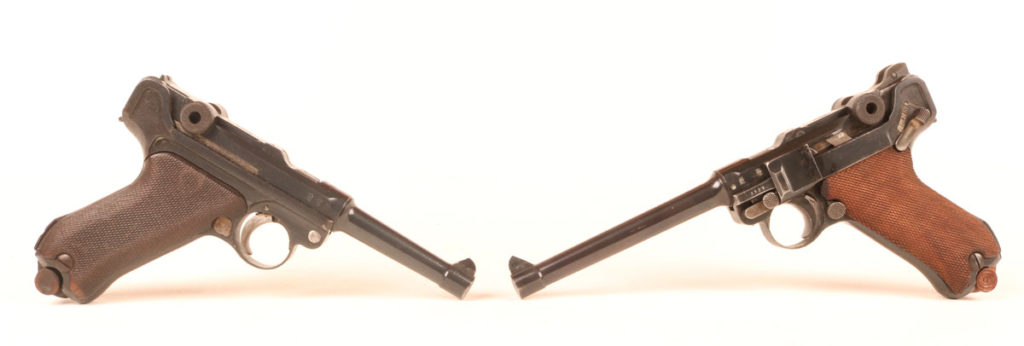
Standard Infantry model Lugers featured a four-inch barrel and fixed sights. The Navy model was two inches longer and included a two-position adjustable rear sight.
We committed gun geeks can contract the vapors over some of the most ridiculous trinkets. However, in the Navy Luger we find a mechanical elegance not readily embodied within lesser guns. The lines are sensual and the engineering inspired. Hefting one of these World War 1 classics will transport you back to a darker, bloodier, more desperate time.
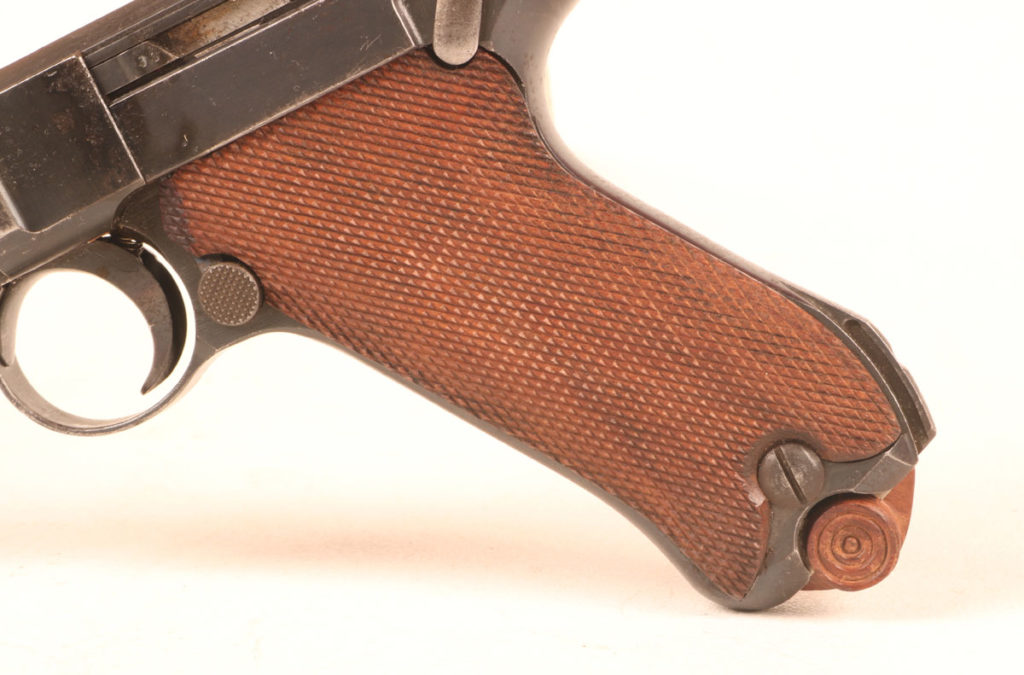
I recently replaced a breach block on a 1914 Luger with a replacement 8\” barrel made in Austria. Surprisingly it was installed correctly! I was able to get a original part from that time period in VG condition for cheap $40 😯😃. I had to fit it by stoning it little bit at a time and check fit. It took all total time to fix beginning to end about 10 hours. It shot great (accurately) ! At 25\’ impromptu resting 5 shots made 2 holes (.745\” group) NOT BAD😁. I also replaced the recoil spring and striker spring on a Simpson rebuild, great pistol 😃. I feel the Luger (pre 1938) IT\’S BEAUTIFUL 😃😁
I recently replaced a breach block on a 1914 Luger with a replacement 8″ barrel made in Austria. Surprisingly it was installed correctly! I was able to get a original part from that time period in VG condition for cheap $40 😯😃. I had to fit it by stoning it little bit at a time and check fit. It took all total time to fix beginning to end about 10 hours. It shot great (accurately) ! At 25′ impromptu resting 5 shots made 2 holes (.745″ group) NOT BAD😁. I also replaced the recoil spring and striker spring on a Simpson rebuild, great pistol 😃. I feel the Luger (pre 1938) IT’S BEAUTIFUL 😃😁
The German Navy Luger was the P.04, which indicates that it was adopted in 1904, not 1914.
Interesting gun always has been to me.I’d love a navy luger in 45acp!
would I bet the farm on one? Nope!
Artillery Luger with a stock is still the best for shooting accurate distance !
Excellent article. Can you even imagine going to war under the water in these old submarines? Talk about iron men. Very cool.
As far as a new Luger Breech block being made. I had to do this when my Luger breach block failed after only 2,500 rounds of shooting low power loads through it. Yes the previous owner did shoot it but not all that much. It took the gunsmith over a year to make one even though he promised me one in only a month and no it was not cheap as to be expected for such precision work. Was the workmanship as good as the original breech block? No of course it was not but it was close. The real bitch I had was in the breach face around the firing pin hole as the machine marks were still there and should have been polished smooth for more reliable feeding and ejection. A fired case is often slammed against the breach on firing and a rough block and or firing pin face on any firearm can result in the case sticking to the face of the breechblock causing a jam when ejecting or causing a jam when feeding a round. And do not bother asking me who it was as I will not tell you for obvious reasons.
My father absolutely loved the Luger, and even as a little kid, I never could understand why. When he passed, I inherited his eclectic accumulation of everything from German handguns to Colt single actions. Of the five Lugers he had, the only one I liked was a battered old reblued DWM with a coal chute bore that was totally reliable and as accurate as any Luger I’ve ever owned. Sometime in the late 1970s I read an article in a long since forgotten gun rag that described the Luger as a “miserable monkey motion machine.” I concur.
I forgot to mention that if you think I was all wet in my comment about chronic Luger breech block disintegration I suggest you try and find an original “use” one. Unless you get really lucky for all practical purposes they simply do not exist on the used parts market.
Great article really informative thanks
I have never understood the “glorification” of the German Luger. Although it was well made and accurate it was perhaps the most unreliable military pisotal ever invented. I would stake my life on a new condition Spanish Ruby pistol than any Luger ever made. The are truly the “jamatic” of the self-loading pistol world. Lube them too much and they jam. Use over power ammo and they jam. Use underpowered ammo and they jam, use the wrong bullet configuration and they jam, let them get even slightly dirty and they jam, limp wrist shoot them and they jam, use the wrong burning rate of powder and they jam.
I might add the Luger has also been erroneously stated as being a very strong design. Again 100 per cent wrong as its toggle bolt is its achilles heel. The bolt is the part that often fails the most and fails first by completely cracking and disintegrating. Its why you should never use too hot an ammo in any Luger.
The trigger pulls on Lugers seemed to be much worse than many other military pistols
The sights on the standard military issue 4 inch guns were so small as to be virtually unusable but in all fairness this was a common fault of most military pistols of the time.
The Luger is a good example of ordinance clerks adopting a weapon just because it suddenly becomes popular rather than actually testing the gun out for themselves. This has been the case many times down through history such as the adoption of the Remington 700 in Vietnam which proved to be a disaster because of its poorly designed and cheaply made extractor and its unsafe and unreliable trigger system. And there is the M16 which meserimized MacNamara in the early 60’s with its Buck Rodgers style stock and proved to be the king of the jamamatic military rifles not only back then but up to the present day.
Of course the paramilitary lunatic fringe sees no fault in any military arm adopted by the military as they will solemnly testify without any proof that all military weapons are of top quality and flawless in operation. The grave yards of the world are full of such evolutionary dead ends.
Although I have been a big critice of today’s econoline plasticky, stamped sheet metal and brittle cast metal MIM parts guns they are lighter in weight, feed more reliably, and plasticky frames even though revolting to gaze upon, don’t rust and the outside glorified frying pan teflon finishes today are much more rust resistant, its just that their low grade brittle MIM cast parts do not last as long as the traditional forged metal parts did and their plasticky frames often crack right behind the trigger guard, especially in direct blow back weapons in .380, but some of them are now being made in the locked breach mode, probably to help prevent this from being a constant problem.
In conclusion both the older traditional much worshiped pistols of the past have had their problems and new problems were created with the invention of low grade plasticky, stamped sheet metal and MIM cast part pistols of the present. At least the older pistols were not so revolting to look at as compared to the plasticky econo grade ilk of today.
Hotty Toddy
Great article, Thank you very much, Just to correct a probable typographical error, it is not -Si Vis Pacum- It is -Si Vis Pacem- Another detail, ” … a loading button to ease reloading chores …” Yes indeed loading a “Luger” magazine is not a pleasant task. However, I do believe that the aforementioned button on the magazine was not entirely provided for loading by hand. I have seen in Europe war trophies P08 that came with a little tool, One end a screwdriver to remove the grips, and on the main body of the little tool a hole designed to fit over the small button discussed and to pull it down as cartridges are dropped in the magazine by pushing down on end opposite the “screwdriver” a flat curved 90 degrees allowing the spring of the magazine to be compressed. In fact I own two of those tools. Just a clarification I believe was useful perhaps. Thanks for a great article.
Always heard that like most German war machines were over engineered the Lugar is no exceptions. Never was interested enough to buy one but must admit it is one cool looking gun, just the look of someone pulling one out is enough to make a person just lay down and play dead. I did think the research was well written and more amazing to find the author is a home me living just up the street from me, his life story was just as exciting as his research. Hope he keeps doing his job at keeping us entertained and keeping us healthy.